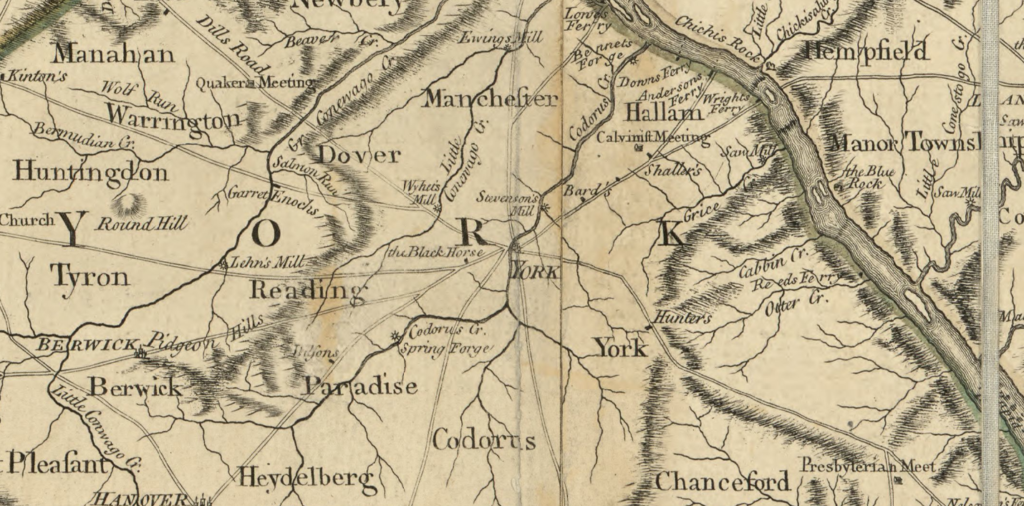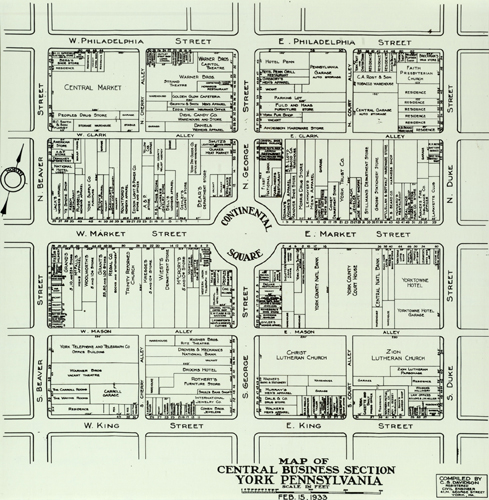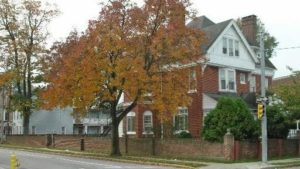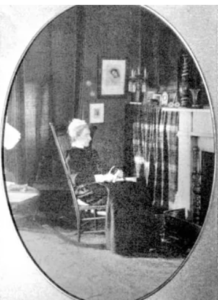York County intersections jammed with history
York County intersections
Philadelphia & Newberry streets, York
I
The situation
Gettysburg has rightly gained fame as a town where roads converged, viewed by Civil War generals as a town where troops could be move to battle – and retreat, if necessary.
But in the American Revolution, Continental Congress, seeking a home after the British drove these founders from Philadelphia in 1777, liked York County, in part, for the same reason. Many roads, coming and going to all major compass points, converged in its county seat of York.
This made it possible for delegates to travel to and from this frontier town from different directions. They didn’t have to use the same crowded road. It also made it possible to avoid the harm of invading British raiders with a hurried departure.
So York and other early Pennsylvania towns, market centers and provisioners for pioneers heading elsewhere, would serve as hubs. These county seats were spaced about 30 miles apart.

So stuff would happen where roads crossed – big and little moments.
York’s Continental Square, as we’ve said, hosted the Continental Congress meeting in the courthouse in its center. Invading Confederates took down the 35-foot American flag atop the 110-foot-tall pole in its center. York native Gen. Jacob Loucks Devers, triumphant from battle in Europe, rode in an open convertible through that square.
People came together in other intersections as well. Sometimes, they clashed. Sometimes they shook hands.
Sometimes, they just passed through, when they should have been redirected.
The witness
Police made a tragic decision – a decision not to redirect a white Cadillac – at the intersection of North Newberry and West Philadelphia streets in 1969.
You might not know it. This crossroads has seen quiet, productive change in the past 50 years.
Today, Martinez Market & Deli, specializing in Hispanic and American food, operates on its southeast corner. Next door, diverse customers seeking their daily fill of caffeine pass through the doors of I-ron-ic, a welcoming coffee shop and art gallery.
Across Newberry, the YMCA offers a New American Welcome Center that encourages immigrant integration and community cohesion.
North of Philadelphia Street, the old Otterbein United Methodist Church building is owned by a counseling agency that offers extensive outpatient services in the mental health space. Another tenant of the old building, Zeal Church, a young congregation supported by an established suburban church, is addressing the souls of visitors.
And on its remaining corner, the Cornerstone barbershop displays a sign in its window welcoming people irrespective of race, religion, countries of origin, sexual orientation and gender.
To make sure the point is clear, the sign ends with an image of an anchor and this statement: “We stand with you. You are safe here.”
These are redemptive changes – promising signs, statements and actions on all four corners – that York is striving to become, albeit slowly, a community of integration and cohesion.
But there was a time that not all were safe at this crossroads, and redemption and promise were nowhere in sight.
This intersection marked the spot of one of the worst sins in York County’s long story – the enabling of the slaying of an innocent Black woman, visiting York with her family in July 1969, that met the definition of a “lynching.”
Police allowed the white Cadillac, bearing Lillie Belle Allen and her family, to pass through barricades instead of directing her to head north elsewhere. She met her death within minutes.
For the rest of this story, please see: From riots to redemption: York’s Philadelphia and Newberry crossroads (ydr.com)
Stories about other York County intersections:
A maker of intersections – the Lincoln Highway forms the main street in several York County towns.
In Continental Square: One spot. Same day. Different wars. Different legacy.
York’s King and Queen intersection tells story of change.
Springettsbury Township corner bears witness to changing face of America.
Beaver & Market: Home to key York players.
A West Manchester village center that up and moved.
How one spot in York County tells much about what is going on around there.

The questions
Often used as a means to get where they are going (rarely are intersections the end destination), people use crossroads as a transition medium, flowing through them as quickly as possible. This is where people from different walks of life collide. As we’ve pointed out, conflict can sometimes arise. However, this meeting is also an opportunity to exercise curiosity. How can we foster more positive interactions among people of different backgrounds, races, genders, ethnicities, abilities, and socioeconomic statuses? How can we help intersections be a place of harmony – and not friction?
Related links and sources: James McClure’s “Never to be Forgotten and “Almost Forgotten.” Photos by Jim McClure. Continental Square map, York Daily Record files
— By JAMIE NOERPEL and JIM McCLURE



